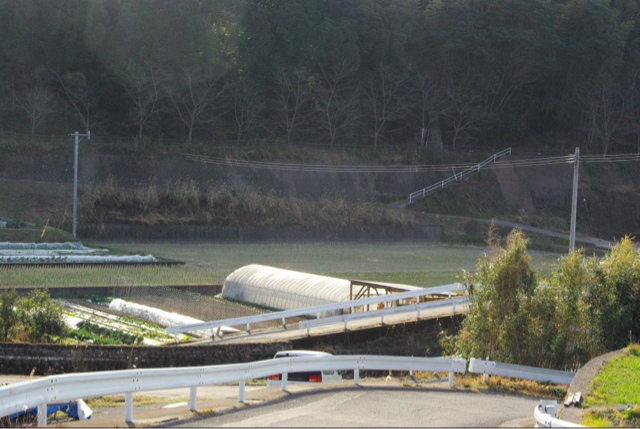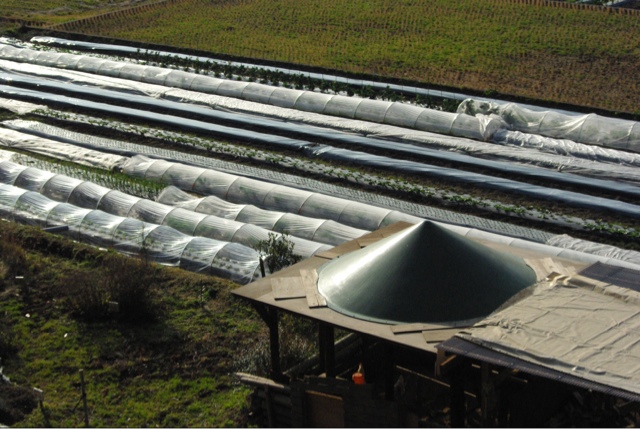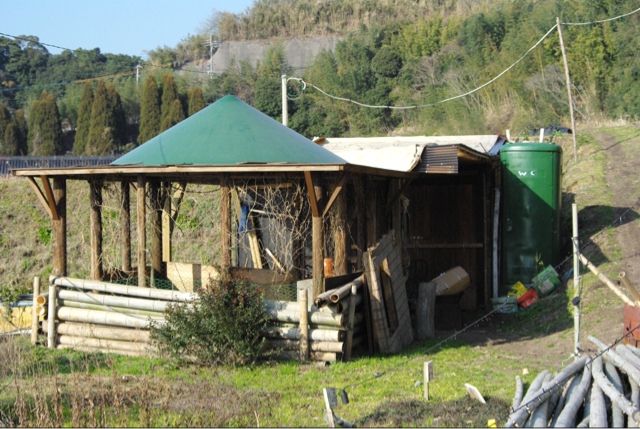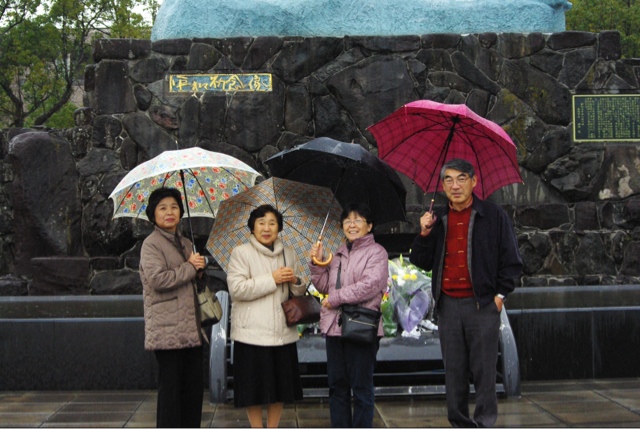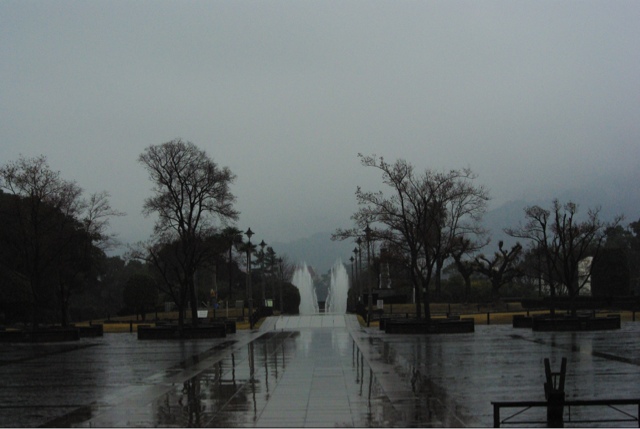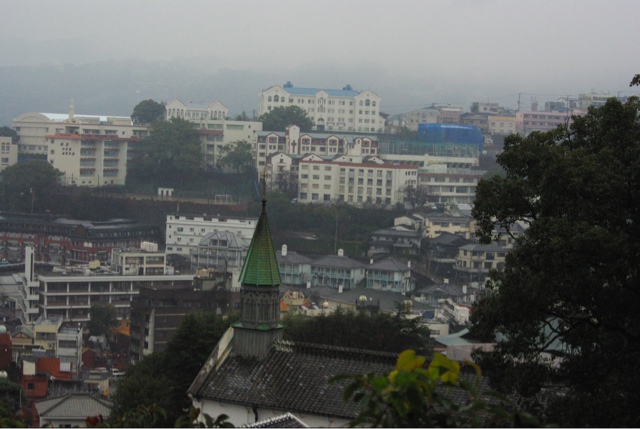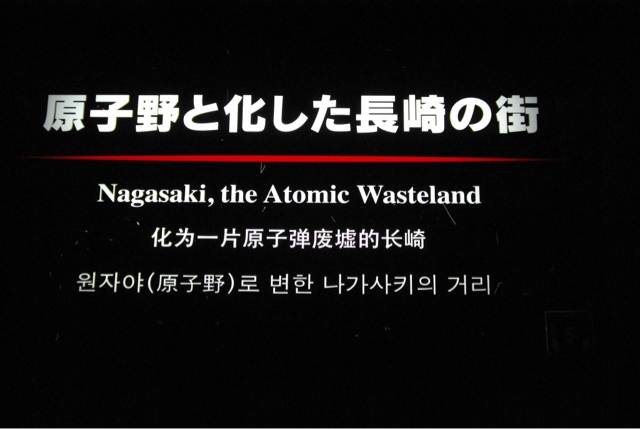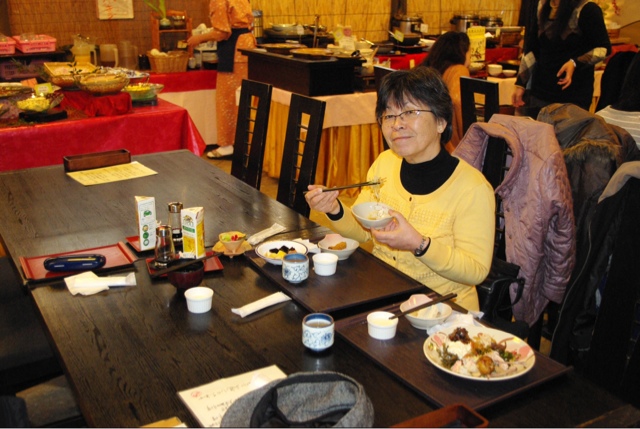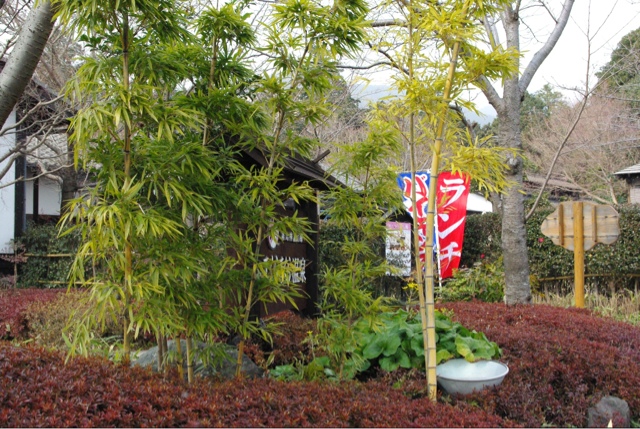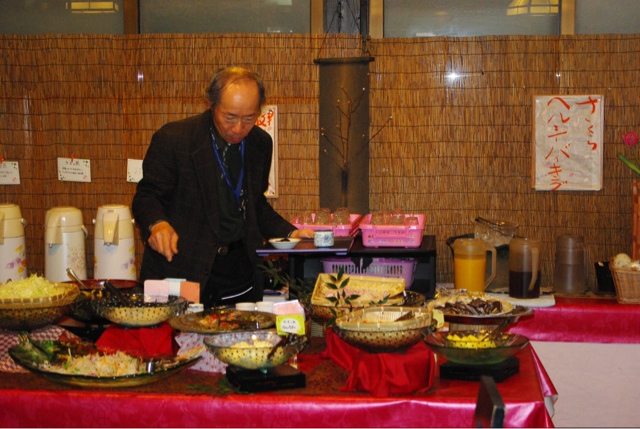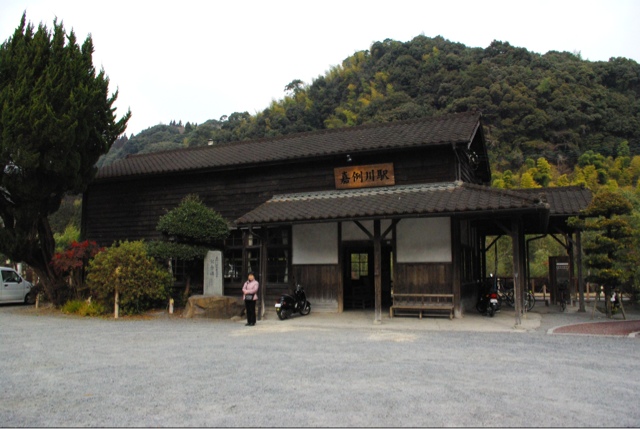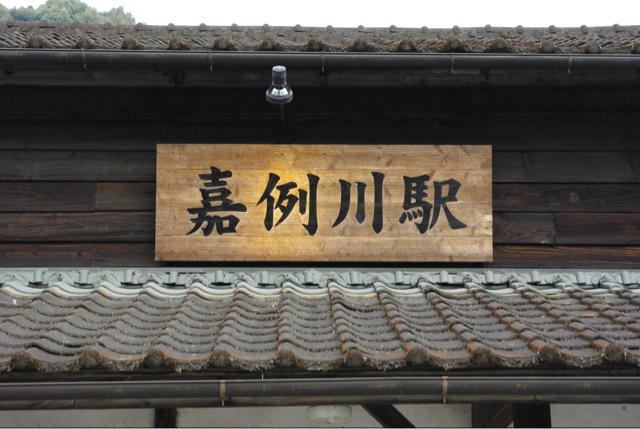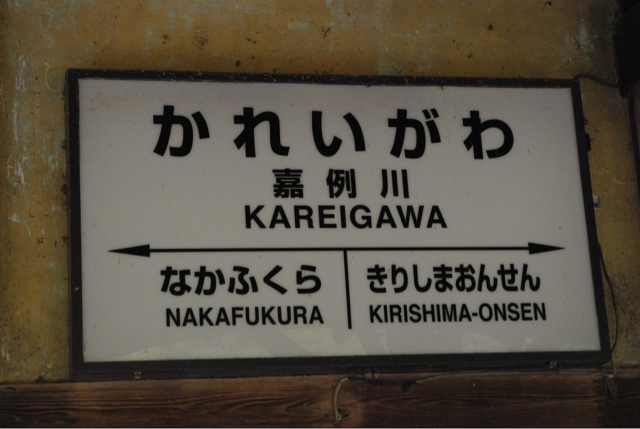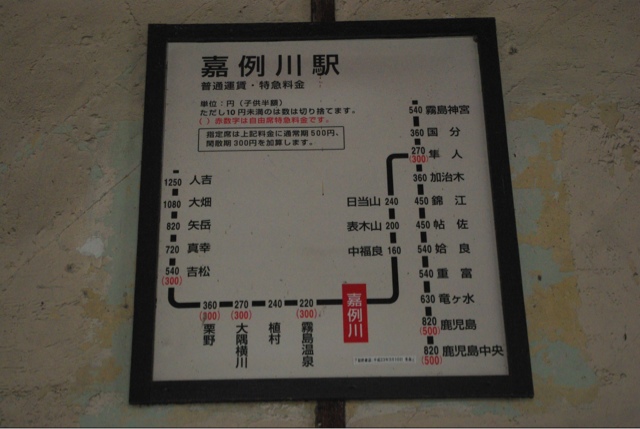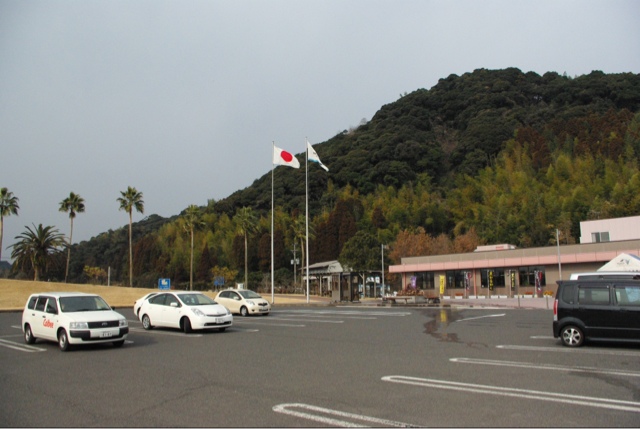Attention backyard farmers! Our hero Kawasaki-san tries almost anything and everything. Today we had the day off and I walked to the farm or one piece of it and took photos before Kawasaki-san drove by and we exchanged pleasantries in his 50% English and my 10% Nihongo. After visiting Kagoshima and being "toured" by Yayoi's cousin again he took us back "home" and we took photos of Gando Farm. Koi (carp) in the pond, ducks swimming on the pond and yes, Dan, two chicken coups, one with three laying hens and a cocky noisy rooster.
The fields are planted with carrots, spinach, daikon radish, broccoli, etc.
Anyway tomorrow our sore dry hands will be put to the test again. Kawasaki-san keeps asking "daijobu ?" meaning "everything okay?". He doesn't think the over forty crowd (he is over fifty) can handle the pace.
Tuesday 31 January 2012
Monday 30 January 2012
WWOOFing on Gando farm
Again we spent the day farming. First we planted carrots and spinach by punching holes at 20cm intervals in black plastic stretched over the plateaus of soil referred to previously. After back filling each punch mark with brown soil we planted 3 seeds in each hole. The carrots were planted in three rows and the spinach in two rows. Later after our supervisor watered the soil she placed a layer of gauss over the plastic film. Nothing appears easy in this country, but I suspect their success rates are higher than our market gardeners in Manitoba. Later we weeded tiny carrot plants planted earlier and of course had trouble with a similar looking weed. Here the germination rate was not that high because these seeds had not been covered. Later we pulled plastic or gauss covers off of plants and watered them before covering them for the cold nights. Two days ago it snowed on our volcano, but the snow has been shrinking.
We have been working quite hard and when the day is over I have not had enough spare time to take some photographs before it gets dark.
We have been working quite hard and when the day is over I have not had enough spare time to take some photographs before it gets dark.
Are we in Japan?
As others have done I keep asking what features of Japan distinguish it from North America. Due to ever present earthquakes electric wires are usually seen above ruining many a photographic view, but that is not unusual. Then I realized that their rain water and waste water runs through unique square channels cut down about 30cm at the side of almost every public road I have seen and frequently on both sides. These channels are usually covered with concrete blocks or grating in the city allowing pedestrians to walk on them, but on mountain roads they are not covered and drivers hope they never drop their tires into it. I am not sure whether other Asian countries use something similar, but I would suspect I was in japan if I observed these channels. And to make things even more obnoxious some astute bureaucrat decided to place concrete pillars in the street. Actually this sort of thing happens because houses are built and later someone decides to squeeze a street between the buildings.
On our first or second trip to Japan I was standing on the deck of a cousin's son (same age as me) when his boss happened to drive by. He did a "double take" when he saw me on his employee's porch and his car slammed into one of these concrete pillars knocking off the front wheel. I still feel guilty about being in the wrong place at the wrong time.
On our first or second trip to Japan I was standing on the deck of a cousin's son (same age as me) when his boss happened to drive by. He did a "double take" when he saw me on his employee's porch and his car slammed into one of these concrete pillars knocking off the front wheel. I still feel guilty about being in the wrong place at the wrong time.
Sunday 29 January 2012
WWOOFing in Japan
After a week in Kagoshima in a weekly mansion which we couldn't afford long term, we were picked up January 28, 2012 by Kawasaki-san of Gando farm north of Kagoshima. We spent the day in essentially an abandoned house and had a very cold evening.
The next day (quite warm today) we farmed, watering vegetables including daikon, thinning out and weeding carrots. The watering solution was essentially diluted fish fertilizer and smells awful.
After this we helped set up plots for future planting. A small tractor pulls a contraption that tills the soil and plateaus it about 8cm high and about 2/3 of a meter wide. At the same time it unrolls black plastic film over the plateau and attempts to hold the edges down with brown soil. We follow it and use our boots to throw dirt against the edges.
Next holes will be punched through the plastic film at regular intervals and multiple rows dependent on the vegetable being planted. Vegetables will be planted in the holes. Next half hoops of plastic rebar will be placed at intervals over the plateaus. Either clear plastic film (or gauze) will be stretched over this and held down with clothespin like devices to the rebar and again soil is thrown on the plastic edges touching the ground. This forms very effective temporary greenhouses. Remember this is late January and not too many people are gardening in Manitoba.
The next day (quite warm today) we farmed, watering vegetables including daikon, thinning out and weeding carrots. The watering solution was essentially diluted fish fertilizer and smells awful.
After this we helped set up plots for future planting. A small tractor pulls a contraption that tills the soil and plateaus it about 8cm high and about 2/3 of a meter wide. At the same time it unrolls black plastic film over the plateau and attempts to hold the edges down with brown soil. We follow it and use our boots to throw dirt against the edges.
Next holes will be punched through the plastic film at regular intervals and multiple rows dependent on the vegetable being planted. Vegetables will be planted in the holes. Next half hoops of plastic rebar will be placed at intervals over the plateaus. Either clear plastic film (or gauze) will be stretched over this and held down with clothespin like devices to the rebar and again soil is thrown on the plastic edges touching the ground. This forms very effective temporary greenhouses. Remember this is late January and not too many people are gardening in Manitoba.
Friday 27 January 2012
Nagasaki Nuclear Holocaust
Shortly after Hiroshima was hit by a nuclear bomb, Nagasaki was also hit. It was an alternative target, and was chosen because of poor visibility over the primary target. Nagasaki was virtually destroyed during WW I and now was destroyed again. Currently it gives the impression of a clean new city in a bowl surrounded by mountains and the ocean. The bomb was supposed to hit the train station and cause maximum human fatalities, but missed this target. The photos are mostly of memorials created to prevent such future events. As at Hiroshima the origami paper crane is the symbol of this wish for peace.
Thursday 26 January 2012
Viking lunch in Japan
A Viking restaurant is a buffet. I have eaten in places which appear to have dozens (hundreds) of different food choices. Although the most recent visit was to a place that probably had at least 50 different items on the table, it was probably some of the most delicious food I have eaten in Japan. This place cost about $12.00 Canadian per person and we were allowed one hour to eat. Frequently vegetables "yama yasai" or mountain vegetables can be almost tasteless and are invariably cooked. But at this Viking all of the food had a distinctive and "oishii" delicious flavour thanks to the skillful use of spices and condiments.
First Honeymoon in Japan
One of the famous people from the Kagoshima area is Ryoma who was instrumental in negotiations between the shogunate government and the new government being formed as part of the Meiji Restoration or modern Japan. Probably due to European influence he took his new bride to a hot spring "onsen" resort in the Kirishima area near Kagoshima. Kagoshima and the surrounding area has more active hot water sources than anywhere else in Japan.
First Train Stations in Japan
In 1903 tracks were laid connecting the first two train stations in Japan. The Kagoshima people are very proud of all that the Satsuma clan accomplished over 100 years ago. Yet the "shinkansen" or bullet train only reached Kagoshima last year. The trains eventually spread out to all of Japan and are probably the primary means of transportation, even though more and more people are driving cars frequently on roads that appear to be designed for pedestrians.
Highway Rest Stops
Unlike North America in Japan they recognize that tourists and people on the move require breaks, whether they be washroom, coffee or snacks. Public washrooms are found everywhere, shopping centers, railway stations and in tourist areas. When traveling by "kuruma" (car) or bus and you enter a freeway it usually means toll gates, and invariably rest stops after what Canadians would feel was only a short drive. The roads in Japan never have the horizon at the end of the road and although the road is winding and the speed limit 80 km/hr they always appear to be doing 100-110 km/hr. Almost anything you can think of is available at these places. I have had grape ice cream at one of these places and feel that this is the most delicious ice cream I have ever had. Canadians have such vanilla imaginations.
Subscribe to:
Posts (Atom)

